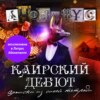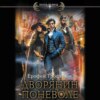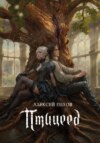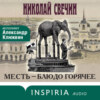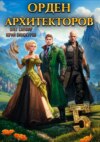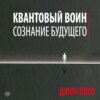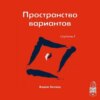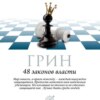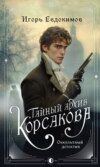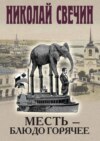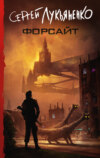Читать книгу: «Blood and Rage: A Cultural history of Terrorism», страница 3
II HEWING THE WAY
The Fenians, or Irish Republican Brotherhood, were at the historic core of, and the mythologised model for, what became the Irish Republican Army or IRA. Ironically, the success of the (not entirely) opposed constitutional tradition in getting the British government to concede Irish Home Rule in 1914 had already engendered a blocking Unionist paramilitary response – the formation in 1913 of the Ulster Volunteer Force (UVF). Outrageous British government acquiescence in this first paramilitary army – with its links to the Conservative Party and the British armed forces – contributed to the creation in Dublin of the Irish Volunteers, elements of which would fuse with the IRB to become the IRA.16
In line with the established Fenian strategy of capitalising on Britain’s imperial woes, elements within the IRB and Irish Volunteers – both supporters of imperial Germany in the Great War – launched the 1916 Easter Rising, taking over a handful of buildings in Dublin for five days. Involving about a thousand insurgents, this was as much intended to discredit the constitutional pragmatism of John Redmond’s Irish Parliamentary Party, which had achieved the goal of Home Rule (albeit deferred for the war’s duration), as it was directed against a Liberal-dominated British government mired on the Western Front in a war which the Catholic Church and most Irishmen supported. Coldly considered, the Rising was hopelessly ill conceived, commencing before a crucial consignment of German weapons had arrived, let alone an invasion of Britain by Ireland’s gallant ally the Kaiser. About fifteen hundred men took part in the Rising, or about 1 per cent of the number of Irish volunteers simultaneously fighting imperial Germany in the British army. But that was not the point, because this crucifixion had been conceived and choreographed as a form of blood sacrifice witnessing the birth of the nation. It was crushed with relative ease, by Irish soldiers of the 10th Royal Dublin Fusiliers, after it had cost about 450 civilian Irish lives, as well as those of 116 soldiers and sixteen policemen. But the manner of the judicial response became, in republican eyes, the constitutive epiphany in the creation of an armed republican movement with widespread support among those Irish Catholics who had conflated religion and nationalism into one sacral tribal entity while dissimulating their own rabid Catholic sectarianism. They had even managed to assimilate such Protestant and Enlightenment precursors as Wolfe Tone or Robert Emmet into a mythologised Catholic nationalist Emerald Isle story. Coming a day after Easter Sunday, in the eyes of mystical nationalists like Padraig Pearse the Rising was the blood sacrifice necessary for Ireland’s liberation. In a pamphlet entitled Ghosts written on the eve of the Rising, Pearse wrote: ‘There is only one way to appease a ghost, you must do the thing it asks you. The ghosts of a nation sometimes ask very big things; and they must be appeased at whatever the cost.’ Pearse’s own ghost has been appeased ever since, notably at the animist rites of IRA funerals, but also at the expense of living people who became innocent dead too.17
The judicial consequences of the Rising only succeeded in engendering ‘maximum resentment, minimum fear’. Sixteen of the leaders were sentenced to death, by military courts, with the executions being dragged out for an unconscionably long time, in two cases involving men physically incapable of standing before a firing squad. Whereas the Dublin Rising had hardly elicited widespread support, there was general outrage at the manner of its suppression, as well as at the internment in Britain of hundreds of its participants. Their revolutionary commitment was deepened in Frognoch and Reading jails. Just as the Rising’s leading ideologue, headmaster Padraig Pearse, had traded on memories of martyrs past in his various proclamations of an Irish republic, so he and his fifteen executed comrades became mythological martyrs themselves, inspiring republicans to this day. Even the Marxists among them clutched crucifixes as they died in a hail of bullets, enhancing their posthumous appeal to the majority of their countrymen.
The Rising could well have been relegated to the status of minor might-have-been had the British government not made the mistake of extending to Ireland the principle of conscription for men under fifty-one (it had existed in the rest of the United Kingdom since 1916) to cover the huge losses caused by the March 1918 German offensive on the Western Front. Why should the Irish be exempt from fighting when they benefited from newly introduced old-age pensions and the wartime hike in agricultural prices? Taken together with the stalling of talks between constitutional nationalists, Unionists and the British government, the Military Service Bill dramatically boosted the fortunes of Sinn Féin in the December 1918 general election, in which an enlarged electorate of over two million voted for the first time. The party name meant Ourselves, or Ourselves Alone, depending on how one translates from the Gaelic, and was indicative of both solipsism and the Cosa Nostra.
Originally a non-violent, non-republican nationalist party, with an eccentric enthusiasm for the Austro-Hungarian Dual Monarchy as a model for Britain and Ireland, Sinn Féin won 48 per cent of the vote in the whole of Ireland, but a striking 65 per cent in the southern twenty-six counties that would become the Irish Free State. By that time, the party had been hijacked by surviving leaders of the Rising, with Eamon de Valera – sprung from British captivity – becoming president of the party at the October 1917 ard-fheis convention. In addition to being reconfigured as a republican party, Sinn Féin was formally linked with militant separatism when de Valera was elected president of the Irish Volunteers, who in 1919 became the IRA. They set up an alternative parliament, called the Dáil Éireann, which met on 21 January 1919, when a Declaration of Independence was proclaimed. Three months later de Valera became president of the Council of Ministers, the rebel provisional government in which also sat such luminaries as Michael Collins, W. T. Cosgrave, Arthur Griffith and Constance Markievicz. The ministers operated from flats above shops or private houses to avoid arrest by the British. Sinn Féin supporters quietly set up a parallel system of courts and local government so as to nullify the power of Dublin Castle, the symbol of imperial rule. The IRA embarked on a military campaign combining elements of guerrilla warfare with terrorism.
Although the IRA had a military command structure modelled on that of the British army, this did not efficiently curb the desire of locally based bands to kill representatives of the Crown forces. An IRA unit in Tipperary shot dead two Royal Irish Constabulary officers in January 1919, the first blow in what became an ugly vortex of violence. The IRA carried out a systematic campaign of terror, beginning with attacks on isolated police officers as well as a detective in the Dublin Metropolitan Police. This developed into larger attacks on police barracks, a strategy designed to sever any connection between the police and people, and to establish the IRA as an alternative authority. Enforcing the quarantining of the police, women who had liaisons with them, or who cooked for them, were threatened with death or had their heads shaved. A seventy-year-old woman who informed the police of a planned IRA ambush was shot dead. In an atmosphere paranoid about spies and fifth-columnists, epitomised by Church of Ireland and Methodist churches, Orange lodges and masonic temples, Ireland’s Protestant minority became targets, with about a third of their number being forced out of their homes in these years. This was only partially a response to the British policy of burning down the homes of known rebels, although it did not quite amount to the ethnic cleansing in Smyrna in the 1920s or Yugoslavia in the 1990s.
These were the classic years of the romance of the gunman, a leather-jacketed or trench-coated figure armed with a pistol, rifle or Tommy gun. This last was an American submachine gun with a cylindrical magazine originally designed to be used at close quarters to clear wartime trenches, but, produced too late for the Western Front, adopted as the weapon of choice for Chicago gangsters. It was useless in shootouts across fields. Other aspects of the learning curve included the realisation that a .45 is more useful in close-quarter assassination than a .38. Most of the hundred thousand or so IRA volunteers were young, single Catholic males from urban backgrounds ranging from shop assistants to medical students. Many had served in the British armed forces or had been educated by the Christian Brothers. In addition to small hit teams, there were larger flying columns of mobile guerrillas in the countryside, consisting of full-time paid rebels, released from whatever restraints being part of a family or community may have imposed. The women’s organisation Cumann na mBann provided vital intelligence, nursing, and material and spiritual support during this period.18
Much of the violence had a tit-for-tat character in a society where there were long hatreds. When a police constable was shot dead by the IRA, mystery assassins killed Tomas McCurtain, the lord mayor of Cork and a commandant in the IRA. His successor, Terence MacSwiney, was jailed for IRA activities, and expired on the seventy-fifth day of his hunger strike in London’s Brixton prison. A shopkeeper and his friend refused to share in the general lamentations involving kneeling women praying for the Blessed MacSwiney in front of a bearded Capuchin. These men were both assassinated by the IRA. After shooting most of the Dublin Metropolitan ‘G’ division which dealt with political crime, IRA gunmen – who included future taoiseach Sean Lemass -struck at Britain’s intelligence presence in Ireland, killing twelve army officers (who stuck out like sore thumbs) in their homes on what became known as (the original) Bloody Sunday. Most of the victims were laid out in the morgue still wearing blood-stained pyjamas. These killings were in reprisal for the execution of medical student Kevin Barry for the murder of a soldier younger than himself. Some of the victims had nothing to do with intelligence, unless their cover was veterinary officers come to Dublin to purchase mules. Enraged by this attack, the British struck back at Croke Park, the mecca of Gaelic football, when during a hunt for fleeing IRA men they fired into, or back at, the crowd (for the causes are contentious), killing twelve people including a player from Tipperary who fell dead on the pitch. This was a result of the deployment of thirteen thousand battle-hardened veterans of the recent war as auxiliaries to the Royal Irish Constabulary. These Black ’n’ Tans, named after their mix-and-match combat garb, brought a certain indiscriminate vigour to the conflict that has passed into Irish folklore and that was condemned at the time by senior British statesmen.
Less well known, about a thousand IRA men were also active in mainland Britain, particularly London, Liverpool and Tyneside. Their wilder schemes included plans to kill Lloyd George, to truck-bomb the House of Commons or to poison the horses in Buckingham Palace. In practice, a hundred IRA men caused extensive damage to Liverpool’s docks, destroying nineteen warehouses. Between February and July 1921 they launched co-ordinated arson attacks on farms around London and Liverpool, in response to British reprisal burnings of farms of IRA sympathisers in Ireland, as well as extensive attacks on telegraph and telephone lines and railway signal boxes. Such attacks caused an estimated £1,000,000 damage. The IRA stalked high-profile military and police targets, notably Basil Thompson, the head of the Special Branch responsible for political criminality. On 22 June 1922, two young IRA men, Reginald Dunne and Joseph O’Sullivan, shot dead field marshal Sir Henry Wilson as he reached his doorstep after spending the morning unveiling a war memorial at Liverpool Street station. O’Sullivan had a wooden leg after being wounded while serving in the British army in the same war Wilson was commemorating. Wilson had once snubbed Michael Collins at a 10 Downing Street meeting. Despite shooting two policemen and a civilian who pursued them, the two assassins were captured, and in August were tried and executed. The British responded to this campaign by giving about fifty prominent figures armed bodyguards, installing barriers around government buildings and parliament, and from time to time deploying soldiers to guard railway lines and telegraph poles.19
By that time, the IRA had effectively run out of ammunition and weapons, while the British had succeeded in capturing about 5,500 of their estimated 7,500 active personnel. Collins estimated that within about three weeks the IRA would not be in a position to fight. Worse, IRA intelligence told the leadership that the British were thinking of trebling the number of troops in Ireland while imposing martial law. This inclined the IRA, which had long been talking with the British government through clerical back channels, to a political settlement, albeit one that many of them would regard as temporary. A truce in the summer of 1921 led to negotiations in Downing Street which de Valera was shrewd enough to leave in the hands of Collins. Three months of talks resulted in the establishment of the twenty-six-county Irish Free State, its autonomy qualified by various residual links to the British Crown akin to those which connected the Dominions of Canada or South Africa to the motherland. Six, rather than nine, counties of Ulster would remain in the United Kingdom, although Collins hoped that when boundaries were drawn this would be reduced to an unviable, and indubitably Protestant, three. The readiness of the British government to treat with individuals it had recently dismissed as murderers was noteworthy, with the lengthy talks themselves generating all manner of human sympathies among the negotiating parties. Just in case they failed, Lloyd George threatened to wage all-out war with the entire resources of the British empire within three days.
The Treaty was adopted in the Dáil by a narrow majority of 64 to 57, indicating how far the issue served to aggravate pre-existing personal and political animosities. Those who backed the Treaty, including Michael Collins and Arthur Griffith, thought that a bird in hand was better than one in the bush, and that full independence could be achieved in due course. In these circles, the Protestants of the six northerly counties were a second-order issue – an inexplicable extension of the industrial civilisation of Glasgow or Manchester in the otherwise Irish pastoral idyll. Opponents were more exercised by the exclusion of the six counties, or by the failure to achieve a fully independent republic based on the renunciation of the symbolic features of union that the Free State still retained through Dominion status. A general election in June 1922 overwhelmingly confirmed the pro-Treaty view. Government structures were based on British exemplars, although significantly there was no Ministry of Education. That was the quid pro quo for endorsement of the Free State by the Catholic Church, which already envisaged it as the Atlantic bastion of anti-modernity that it would remain for the next fifty years. Archbishop Walsh voted Sinn Féin.
Since the purest of the republican pure derived their spiritual legitimacy from the martyrs of 1916 and back beyond to a Catholicised Wolfe Tone in 1798, rather than from democratic elections, they ventured ahead with their military quest for the establishment of an independent republic. Roughly 50 per cent of the IRA merged into the newly formed Irish army, while the remaining half comprised Irregulars or Republicans – the forerunners of the modern IRA. These were the armed temple virgins of the flames of Padraig Pearse.20
In March 1922 IRA men opposed to the Dáil’s decision took over buildings in Dublin, in a symbolic re-run of the Easter Rising. This was hopeless because the Free State’s army was deployed against them, using arms provided by the British. The British army even lent it a couple of cannon. ‘What’s artillery like?’ asked one IRA man of a veteran of 1916. ‘You get used to it, it’s not bad,’ replied his comrade. The Dublin insurgency was easily suppressed, as it was in other cities and towns. The IRA reverted to the sort of rural guerrilla war it and its pro-Treaty foes had recently fought against the British, with one unit happening to ambush and kill Michael Collins on 22 August 1922. Ironically, the Provisional Government resorted to measures indistinguishable from the British to win what had become a civil war – although unlike the British it had the support of the Catholic Church, which eagerly excommunicated the IRA. A special-powers resolution perpetuated the draconian military reprisals that had commenced with the British Restoration of Order in Ireland Act two years before. A spiral of violence recommenced. Some seventy-seven republican captives were executed, regardless of whatever services they had performed on behalf of Irish patriotism. When the Irish authorities shot the fifty-two-year-old republican writer Erskine Childers, the IRA announced that members of the government and its supporters were fair game.
The first victim was Seán Hales, a pro-Treaty deputy to the Dáil. The Provisional Government responded to his killing by executing four republican prisoners, thereby putting a stop to this particular cycle of publicly acknowledged violence. However, it did not stop murderous warfare between the IRA and Free State troops. Some of the latter seem to have killed IRA prisoners by tying them up and exploding mines beneath them. Perhaps as many as four to five thousand people were killed in the civil war, the majority of them IRA personnel, as recorded Free State military losses were about eight hundred. In May 1923 the IRA declared a ceasefire and hid its arms, prompting president William T. Cosgrave to remark that the organisation’s members might need them ‘any time they took it into their heads to interview a bank manager’. Be that as it may, in republican circles the Rising became a foundational myth that one criticised at one’s peril. In 1926 the working-class Protestant playwright Sean O’Casey did just that, in The Plough and the Stars, performed in the national Abbey Theatre a decade after the Rising. The wives and widows of republican martyrs, including the mother of Pearse, created pandemonium on stage as the Irish tricolour was paraded in a pub to the ghostly tones of Pearse proclaiming his republic. O’Casey left Ireland and never returned.21
One inadvertent consequence of the civil war that convulsed the South was that it enabled Ulster Unionists – the secession within the secession – to consolidate partition by forming the state of Northern Ireland. This was accelerated by the quiet decampment of a third of southern Protestants after an IRA campaign of sectarian murder less well known than ugly Unionist riots against Catholics in Belfast. The ambiguities and unsuppressed hopes emitted by the southern Treatyites had unfortunate repercussions in the North. Catholic nationalists abstained from political involvement in the crucial formative years of Northern Ireland, a stance that enabled the Unionist majority to abolish proportional representation and to gerrymander its local government arrangements. This fed a sense of Catholic nationalist grievance that the victims themselves were partly responsible for because of their wish to maintain the provisional character of the new northern polity. This still exists as part of the United Kingdom in the early twenty-first century, with Belfast, but not Dublin, on British television weather maps.22





